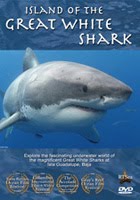 If you do not currently subscribe to the National Geographic magazine or peruse it's web site, here's a good reason to: the January, 2010 issue has an excellent, informative, but ultimately disturbing article written by Bryan Christy about the wildlife trade - both legal and illegal - in Asia.
If you do not currently subscribe to the National Geographic magazine or peruse it's web site, here's a good reason to: the January, 2010 issue has an excellent, informative, but ultimately disturbing article written by Bryan Christy about the wildlife trade - both legal and illegal - in Asia. Christy details the rise and ongoing operation of one of Asia's most successful and notorious wildlife dealers and his operation that entails collusion - or at least a blind indifference - from government officials. We're talking about the very people who are expected to enforce the laws and regulations to curtail the illegal activities of the very same wildlife dealers.
Christy details the rise and ongoing operation of one of Asia's most successful and notorious wildlife dealers and his operation that entails collusion - or at least a blind indifference - from government officials. We're talking about the very people who are expected to enforce the laws and regulations to curtail the illegal activities of the very same wildlife dealers.And the illegal wildlife trade also exists supported by a complex structure of fronts and third-parties including zoos or animal parks and captive breeding facilities - all used to deter suspicion while endangered or highly regulated flora and fauna are smuggled through, sometimes with documentation to support their supposed "legal" status.
But the corruption and demand for exotic wildlife based on centuries-old beliefs in homeopathic medicine that pervades these poor or developing countries is not the only issue. Market demand in the legal wildlife trade for life animals and animal parts is certainly fueled by Asian customers and but also by the biggest customer of all: the United States.
Sadly, Asia's wildlife trade is big business: over 13 million live animals were legally exported from Southeast Asia from 2000 through 2007, over 30 million animal parts (dead stony corals and reptile skins are prime examples). The scope of legal trade in wildlife is disconcerting enough - and actually greater than the illegal trade - but endangered species command such high prices on the black market that the illegal trade remains a highly profitable activity.
Kudos to National Geographic - an organization not only dedicated to wildlife preservation but one that must regularly deal with many of the agencies under suspicion - for tackling this subject head-on.
 On a lighter note, the same January issue has a great photo article about anemonefish, also known as clownfish, or "Nemo, Nemo!" if you have small children. Accompanied by striking images from Nat Geo's resident underwater photographer, David Doubilet, James Prosek writes about the symbiotic relationship these colorful reef dwellers have with their anemone hosts and their current status in the wild and as a popular home aquarium fish.
On a lighter note, the same January issue has a great photo article about anemonefish, also known as clownfish, or "Nemo, Nemo!" if you have small children. Accompanied by striking images from Nat Geo's resident underwater photographer, David Doubilet, James Prosek writes about the symbiotic relationship these colorful reef dwellers have with their anemone hosts and their current status in the wild and as a popular home aquarium fish.If you want to learn more abut the legal and illegal trade in exotic or endangered wildlife, visit these web sites:







No comments:
Post a Comment